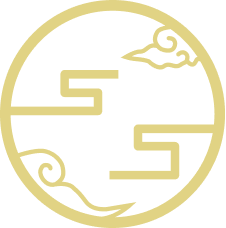DOING GOOD REWARDS
Improving the mobile design to increase donation
Timeline
3 weeks
Tool
Miro, Marvel, Figma, Adobe scan, Slack, Zoom
My role
Project Manager, UX
Researcher, Ideation,
Prototyping & Testing
Team
Tiffany, Kezia, Zihao, Myself
Project summary:
DOING GOOD REWARDS(DGR) is an online discount platform where users can browse offers and nominate a percentage of their discount to be donated to charity on their behalf. The goal of the company is to understand their users and increase the amount donated to charity by adding it to everyday shopping with the mobile app.
From the research and app evaluation, we found socially conscious consumers are more likely to use the app. They will donate to trusted causes where they have personal connections rather than researching them with initiative.
We redesigned the app by simplifying the payment page and adding features of inviting friends and charity campaign updates to increase trust within the app. We also identified multiple usability issues by conducting a Heuristic Evaluation and gave suggestions accordingly.
Context:
Charities have spent lots of time and effort on collecting donations although charitable giving is at an all-time high. Australians are making tax-deductible donations at six times the rate we did in the 1970s.
DOING GOOD REWARD’s goals:
DOING GOOD REWARDS(DGR) is an online discount platform where users can browse offers and nominate a percentage of their discount to be donated to charity on their behalf.
$200M+ to charities by 2026 through Doing Good Rewards.
Test and validate the app as it is still at an early stage based on the persona with limited user research.
The process:
Market research to understand the trend of donation and identify potential users firstly:
74 responses from the survey:
The survey was sent out to validate if the demographics will affect donation and also collect quantitative data on people’s donating habits.
72.9 % people donated in the last year including different age groups.
52.7 % people feel donating can sometimes be hard.
Interview with 22 people:
Even Millennials seems more active in giving, we noticed that people from other age groups are also passionate about donating through the survey. Besides, in order to deeply understand why people feel donating can sometimes be hard, we decided to interview people who have donating experience regardless of demographics.
Key insights:
Participants highly value transparency and visibility on impact. However, they will choose to donate to causes where they have personal connections or passions.
Participants trust word of mouth.
Participants are unsure which organisations to trust.
Archtypes:
The socially conscious consumer
Define the problem:
People need a way to trust a cause so that they feel confident donating their money
Initial usability test to validate if the app has a “trust” problem, the answer is yes:
Only one of the participants trusted the app totally while the others said their trust is conditional on personal connections.
We also noticed lots of usability issues through the test, so we conducted Heuristic Evaluation to have comprehensive inspecting of the app.
Since the DGR team are also working on these issues, we will only give suggestions for them rather than target this as our main problem in this sprint.
How might we establish trust with the user on the DGR app?
Ideate and feature prioritisation based on user value and business effort:
We decided to develop features of inviting a friend, charity campaign updates, about us & partner companies as our priority.
Iterate and testing:
I drew a paper prototype with new features that we came up with and tested it with 6 participants. They responded well to “invite a friend” and “campaign updates“, but “about us“ page didn’t establish their trust as users want to check it before using the app.
Hi-fi prototype was created based on users feedback. We simplified the payment page and added features of inviting friends and charity campaign updates to increase trust within the app.
Final product:
Next steps:
Test the final prototype and for the wider launch, we want to continue building the network through personal connections. For future design sprints we may consider:
Utilise personal referral codes.
Allow users to nominate charities they are passionate about.
Reflection:
I have learnt it is quite important to use multiple methods to keep everyone on the same page. For example, write down the criteria and tasks, set up a timebox, identify team members’ blocks as soon as possible.
Being neutral while doing research and testing is the guarantee to get punctual feedback.





















